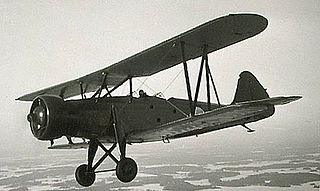
The VL Tuisku was a Finnish trainer aircraft designed in the 1930s. It was a two-seat, single-engined biplane with a welded steel framework, covered with fabric. 30 were produced for the Finnish Air Force and served from 1935 to 1949.

The Albatros L 75 Ass was a German trainer biplane of the 1920s. Of conventional configuration, it seated the pilot and instructor in separate, open cockpits. The wings were single-bay, equal-span, and had a slight stagger. Production continued after Albatros was absorbed by Focke-Wulf.

The Zlín Z-XII was a Czechoslovak two-seat sports aircraft, and the first major design success by the Zlínská Letecká Akciová Společnost (Zlín) aircraft manufacturing company, after its founding in Otrokovice after the takeover by the Bata Group.

The Heinkel HD 22 was a trainer designed in Germany during the 1920s. It was a conventional single-bay biplane with staggered wings braced with N-type interplane struts. The pilot and instructor sat in tandem, open cockpits, and the main units of the fixed, tailskid undercarriage were linked by a cross-axle.

The RWD-16 was a Polish two-seat low-wing sports plane of 1936, constructed by the RWD team, that remained a prototype.
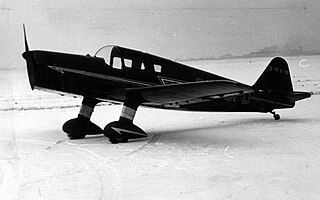
The RWD-19 was a Polish two-seat low-wing sports aircraft of 1938, constructed by the RWD bureau.

The Lederlin 380L is an unconventional light aircraft developed in France in the 1960s, and marketed for homebuilding.
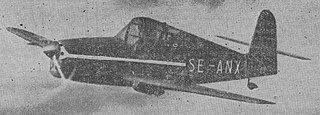
The Skandinaviska Aero BHT-1 Beauty is a 1940s Swedish single-seat light monoplane designed by E. Bratt, K.E. Hilfing and B.Törnblom and built by Skandinaviska Aero of Stockholm.

The Elias EC-1 Aircoupe was an American two-seat parasol wing monoplane designed and built by Elias of Buffalo, New York.
The OFW OK-15 was a 1950s Austrian two-seat light aircraft. Designed by Otto Kauba and built by the Österreichische Flugzeugwerke GmbH (OFW) at Wiener Neustadt, it was the first aircraft to be designed and built in Austria for 20 years.
The Amax Sport 1700 is an Australian homebuilt aircraft that was designed and produced by Amax Engineering of Donvale, Victoria. When it was available the aircraft was supplied as a kit or in the form of plans for amateur construction.
The Historical P-51 Mustang is an American homebuilt aircraft that was designed and produced by the Historical Aircraft Corporation of Nucla, Colorado. The aircraft is a 62.5% scale replica of the original North American P-51 Mustang and when it was available was supplied as a kit for amateur construction.
The Historical PZL P.11c is an American homebuilt aircraft that was designed and produced by Historical Aircraft Corporation of Nucla, Colorado. The aircraft is a 66% scale replica of the Polish PZL P.11c fighter and when it was available was supplied as a kit for amateur construction.
The Junkers Profly Ultima is a German aerobatic homebuilt aircraft that was designed by Andre Konig and produced by Junkers Profly of Kodnitz, introduced in 1993. When it was available the aircraft was supplied as a kit for amateur construction.
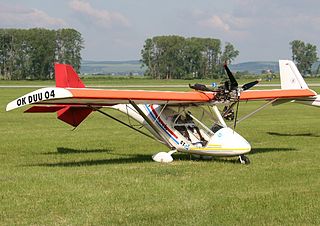
The Letov ST-4 Aztek is a Czech microlight aircraft that was designed and produced by Letov Kbely of Prague - Letňany, in the 1990s. When it was available, the aircraft was supplied as a complete ready-to-fly aircraft, or as a kit for amateur construction.
The Stern ST 87 Vega is a French homebuilt aircraft that was designed by Rene Stern, first flying in July 1992. The aircraft is supplied in the form of plans for amateur construction.
The Deland Travel Air 2000 is an American homebuilt aircraft that was designed and produced by Orlando Helicopter Airways, an aircraft maintenance and repair company located in DeLand, Florida. When it was available the aircraft was supplied as a kit for amateur construction and marketed under the "Deland" brand, named for the company's location. Plans were also available.
The Tech Aero TR 200 is a French homebuilt aerobatic aircraft that was designed and produced by Tech Aero of Glisolles, first flown in August 1988. When it was available the aircraft was supplied as a kit for amateur construction.

The Warner Revolution II, also marketed as the Space Walker II, is an American homebuilt aircraft that was designed and produced by Warner Aerocraft of Seminole, Florida. When it was available the aircraft was supplied as a kit or in the form of plans for amateur construction.
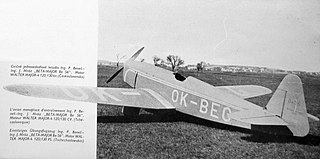
The Beneš-Mráz Be-56 Beta-Major was a single-seat aerobatic advanced trainer manufactured in Czechoslovakia shortly before World War II.














